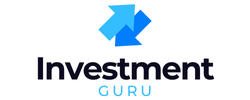Are you currently unemployed and searching for a high paying job but don’t have years of experience under your belt? Then you’ve come to the right place. Lots of people start with little more than a good attitude and the willingness to learn. And the truth is, you don’t always need a fancy degree or a 10-page résumé to land a good job with a reasonable pay.
Think about it: every single “experienced” worker you see today had a first day once. Someone gave them a shot. And right now, in the U.S., there are plenty of jobs where companies are happy to train you if you show up reliable, motivated, and ready to work.
In this guide, I’m not going to toss you vague lists like “become an entrepreneur” or “start a YouTube channel.” No — I’ll walk you through real jobs you can apply for today, where to find them, what buttons to click, and even what to say when you’re brand new.
By the end, you’ll have more than just ideas. You’ll have a roadmap:
- Which jobs actually pay well with no experience.
- Step-by-step directions to get started.
- What to expect your first week.
- How to grow your paycheck once you’re in.
Simple truth: The best way to get experience is to start a job that doesn’t require any — and let that first paycheck prove it.
Table of Contents
What Counts as a High Paying Job?
“High paying jobs” means different things depending on where you live and what kind of work you’re looking for. For some, it’s anything above $20 an hour. For others, it might mean crossing the $50,000 a year mark. Let’s break it down so you know what’s realistic.
Hourly vs. Salary vs. Commission
- Hourly jobs: You get paid for every hour you work. A lot of entry jobs pay $15–$25 an hour, but some (like trades helpers or tech support) can climb into the $30s fast.
- Salary jobs: A fixed yearly paycheck, usually split into biweekly paychecks. Entry salaries of $40k–$55k are common for “no experience” office roles like admin assistants or junior tech support.
- Commission jobs: You earn a base pay + bonus every time you sell something. Sales reps and insurance agents fall here, and the upside can be much higher — if you’re willing to hustle.
Factors That Change the Pay
- Location — A job in New York City may pay more than the same role in a small town, but living costs are also higher.
- Shift — Night shifts or weekends often pay extra.
- Company — Big names (Amazon, UPS, Apple) usually start higher and offer benefits. Smaller local shops may start lower but give you flexibility.
How to Read Job Posts
When you see job ads, look for these green flags if you’re starting fresh:
- “No experience required”
- “We provide training”
- “Entry-level position”
- “Certification provided”
These are signals that the company expects beginners and is set up to train you.
Expert note: Don’t get discouraged if one ad says “2 years of experience preferred.” Apply anyway. Many times, “preferred” just means “nice to have.” Employers will often take a motivated beginner over someone with a stale résumé.
Simple truth: High paying doesn’t always mean six figures. It means enough to pay your bills, cover savings, and give you room to breathe — without needing 10 years of past jobs to qualify.
Starter Rules (So You Don’t Lose Your Way)
Before you chase any high paying job with no experience, you need a simple game plan. Without it, you’ll send out dozens of applications and wonder why nothing sticks. With it, you’ll look organized, serious, and ready — even if you’ve never worked the job before.
Rule 1: Pick One Path First
Don’t apply to a warehouse job, a real estate license, and a social media gig all in the same week. You’ll confuse yourself and send mixed signals to employers.
Action step: Choose one type of job that excites you the most. Circle back to others later if needed.
Rule 2: Set a 2-Week Test Plan
Give yourself 14 days to focus on that path. Apply, follow up, maybe even shadow someone. At the end of two weeks, you’ll know if it’s for you.
Action step: Mark two weeks on your calendar and commit to that sprint.
Rule 3: Basic Tools You’ll Need
- Email address: Keep it professional (firstname.lastname@gmail.com).
- Résumé: One page, even if it’s mostly school, volunteer work, or skills.
- LinkedIn profile (optional but helpful): Free and makes you look more legit.
Action step: Spend one evening setting these up. Done once, useful for every job.
Rule 4: Track Your Applications
Don’t just “spray and pray.” Keep a list of where you applied, when, and who to follow up with.
Action step: Open a Google Sheet with columns: Company, Job Title, Date Applied, Contact Person, Status. Check it daily.
Expert note: The people who land jobs fastest are rarely the ones with the “best” résumés. They’re the ones who look reliable, stay organized, and follow up when others don’t.
Simple truth: If you treat your job hunt like a job itself, you’ll stand out right away — even with zero past experience.
15 High Paying Jobs With Little or No Experience
1. Sales Development Rep (SDR) – Tech Sales

Why it pays:
Companies need people to reach out to potential customers and start the sales process. Tech firms especially pay well because the products are high value. Beginners can earn $45k–$60k base salary, plus commissions that can double your take-home if you’re good.
Day-One Requirements
- Clear communication (talking and writing).
- Comfort with phone calls, Zoom, and email.
- No sales experience? No problem — companies train.
Where to Apply
- Search “Sales Development Representative entry level” on Indeed, LinkedIn, or Glassdoor.
- Big firms like Oracle, Salesforce, and HubSpot hire dozens of SDRs.
- Smaller startups often hire remote SDRs too (search “remote tech sales no experience”).
Step-by-Step: How to Get Hired
- Go to LinkedIn Jobs.
- In the search bar, type “Sales Development Representative entry-level”.
- Filter by “No Experience” or “Training Provided.”
- Click a listing → Tap Easy Apply.
- Upload your one-page résumé and a short cover note:
- Example: “I’m motivated, coachable, and eager to grow in tech sales. I’m ready to learn your systems and bring energy to the team.”
7-Day Skill Plan
- Day 1–2: Watch free YouTube videos on “Intro to Sales Calls.”
- Day 3–4: Practice a 30-second “pitch” about any product (your phone, your shoes).
- Day 5–6: Role-play with a friend. Have them ask “Tell me more” or “I’m not interested.”
- Day 7: Record yourself, listen back, and fix filler words like “um.”
How to Stand Out
- Show you can learn quickly: mention a skill you picked up recently.
- Mention you’re comfortable with rejection (sales is about bouncing back).
Common Mistakes
- Sounding robotic on calls.
- Writing long emails nobody reads.
- Ignoring follow-ups (most sales come after the 2nd or 3rd touch).
Growth Path
- Year 1: SDR ($45k–$60k + commissions).
- Year 2–3: Account Executive ($70k–$120k).
- Beyond: Sales Manager or VP of Sales (six figures + bonuses).
Simple truth: Tech sales is one of the few fields where beginners can break in, get trained, and see their paycheck jump fast if they work hard.
2. Real Estate Agent

Why it pays:
Every time you help someone buy or sell a home, you earn a commission. On a $300,000 house, even a 2% commission nets you $6,000. Close a few deals in a year, and your income can quickly cross six figures. That’s why many people jump into real estate after unrelated jobs.
Day-One Requirements
- High school diploma (or equivalent).
- A license (you’ll need to complete a pre-licensing course in your state).
- Confidence talking to people and some basic math for numbers like mortgage estimates.
Where to Apply / Sign Up
- Search “[Your State] real estate pre-licensing course” on Google.
- Big schools: Kaplan Real Estate Education, Colibri Real Estate, RealEstateU.
- After passing the exam, you’ll join a brokerage (think of it as a company home base: Keller Williams, RE/MAX, or even smaller local brokerages).
Step-by-Step: How to Get Started
- Take a Pre-Licensing Course (often 60–180 hours; many are online).
- Pass Your State Exam — multiple choice, nothing too scary.
- Find a Brokerage to “sponsor” you. They give you an office, mentorship, and listings.
- Get Your License Number (state issues it after exam + background check).
- Start Prospecting — talk to family, friends, neighbors, and network.
7-Day Skill Plan
- Day 1–2: Research your state’s licensing requirements. Bookmark the right site.
- Day 3–4: Enroll in an online course and start modules.
- Day 5–6: Read real estate listing sites (Zillow, Redfin) to learn how homes are described.
- Day 7: Draft a mock listing for your own house/apartment.
How to Stand Out
- Build a simple online presence: a LinkedIn page + a free Instagram with local property photos.
- Be prompt — reply fast to emails, texts, and calls. Clients notice.
Common Mistakes
- Thinking it’s “easy money.” Real estate is sales + service.
- Skipping mentorship. New agents who don’t shadow experienced ones often struggle.
- Forgetting taxes — as an agent, you’re usually self-employed.
Growth Path
- Year 1: New agent — $40k–$60k is common if you hustle.
- Year 3–5: Experienced agent — $80k–$120k+.
- Year 10+: Broker or Team Leader — six figures plus a team working under you.
Simple truth: Real estate isn’t about selling houses; it’s about guiding people through one of the biggest choices of their lives. If you can learn, listen, and hustle, you can make serious money even with no experience.
3. Insurance Agent

Why it pays:
Insurance companies love hiring beginners because they know most people don’t grow up dreaming “I’ll sell insurance.” The upside? They provide training and pay well for effort. First-year agents often earn $45k–$70k, and top sellers can cross six figures in a few years.
Day-One Requirements
- High school diploma or equivalent.
- An insurance license (state exam — usually quick to complete).
- People skills: listening to what customers need and matching them with the right plan.
Where to Apply
- Big companies like State Farm, Allstate, New York Life, Prudential.
- Search “insurance sales trainee” or “insurance agent no experience” on Indeed or LinkedIn.
- Many jobs are W-2 with benefits (base salary + commission), while others are 1099 independent contractor roles (more freedom, more responsibility).
Step-by-Step: How to Get Started
- Apply to a Company: Go on State Farm Careers → search “agent trainee.”
- Interview: They’ll ask about your motivation, not your past insurance skills.
- Enroll in Pre-Licensing: Company often covers the cost (or reimburses you). Courses last 1–3 weeks, online or in person.
- Take the State Exam: 100–150 multiple-choice questions; you need around 70% to pass.
- Start Selling: You’ll get a mentor, learn scripts, and shadow calls/meetings until you’re ready.
7-Day Skill Plan
- Day 1: Google “[Your State] insurance license requirements.”
- Day 2–3: Watch YouTube basics on “life insurance vs health insurance.”
- Day 4: Draft a simple script: “Tell me about your family’s needs.”
- Day 5–6: Role-play with a friend as the customer.
- Day 7: Call three insurance agencies and ask how their training works.
How to Stand Out
- Be comfortable on the phone — practice clear, confident speech.
- Mention any background in customer service, retail, or even volunteer work. Those skills transfer.
- Show you’re motivated to learn licensing quickly.
Common Mistakes
- Selling without listening. Insurance is about solving problems, not pushing policies.
- Quitting early — the first 3 months are tough as you build a client list.
- Forgetting to renew your license — each state requires continuing education.
Growth Path
- Year 1: Trainee agent — $45k–$70k.
- Year 3: Experienced agent — $80k–$120k+.
- Long-term: Start your own agency or move into management.
Simple truth: Insurance sales might not sound glamorous, but it’s steady, respected, and one of the fastest ways for a beginner to hit a high paying income.
4. Notary Public / Loan Signing Agent
Why it pays:
Every time important documents need signing — mortgages, car loans, wills, contracts — a notary is required to witness and stamp. Standard notary jobs pay $10–$15 per signature. But as a loan signing agent, you handle mortgage paperwork and can earn $75–$200 per appointment. Do a few signings a day, and you’re looking at solid full-time income.
Day-One Requirements
- High school diploma or equivalent.
- You must become a commissioned notary in your state (application + background check).
- For loan signings, you’ll need extra certification (simple online courses).
Where to Apply / Sign Up
- Start at your state’s Secretary of State website — search “[Your State] become a notary.”
- For loan signing agent training: National Notary Association (NNA) is the main one.
- Once certified, you’ll find jobs through:
- Signing platforms (Snapdocs, SigningOrder, NotaryRotary).
- Local escrow/title companies.
Step-by-Step: How to Get Started
- Go to your state’s Secretary of State site.
- Complete the Notary Application (usually $40–$120 fee).
- Pass a background check (basic criminal history check).
- Buy your Notary kit: stamp, journal, and sometimes a bond (supplied via NNA).
- Take a Loan Signing course (online, often under $200).
- Sign up for platforms like Snapdocs to get job notifications.
7-Day Skill Plan
- Day 1: Research your state’s notary requirements. Bookmark the forms.
- Day 2: Fill out the application and gather ID documents.
- Day 3–4: Order your notary supplies kit.
- Day 5: Watch sample loan signing videos on YouTube.
- Day 6: Take practice quizzes from the NNA website.
- Day 7: Draft a simple “intro email” to send to local title companies once you’re certified.
How to Stand Out
- Be professional: neat appearance, punctual arrival.
- Build a reputation for accuracy (mortgage paperwork has zero room for mistakes).
- Get reviews on signing platforms — they drive more offers your way.
Common Mistakes
- Forgetting to notarize every required signature (double-check every page).
- Being late — title companies won’t call you again.
- Not networking locally — word of mouth is huge in this business.
Growth Path
- Year 1: Notary only — $15 per stamp, side money.
- Year 1–2: Loan signing agent — $75–$200 per appointment, $3k–$7k/month possible part-time.
- Year 3+: Build repeat business with escrow officers and scale into a six-figure solo business.
Simple truth: Becoming a notary is one of the lowest-barrier ways to start earning, and turning into a loan signing agent can push your income into “high paying” territory faster than most people realize.
5. Solar Sales Rep
Why it pays:
Solar energy is booming. Families and businesses want to cut power bills, and reps help them switch to panels. The pay? Base salaries around $40k–$50k, but commissions can quickly push total earnings into $80k–$120k if you’re closing deals.
Day-One Requirements
- High school diploma.
- Comfort talking to homeowners face-to-face or at events.
- No prior sales needed — companies train you on the product.
Where to Apply
- Solar companies like Sunrun, SunPower, Tesla Solar.
- Search “solar sales representative no experience” on Indeed.
- Many jobs start as door-to-door reps or store kiosk reps inside places like Home Depot.
Step-by-Step: How to Get Started
- Apply online at Sunrun or Tesla Careers.
- Interview — they’ll ask about your people skills, not past solar knowledge.
- Complete paid training on how solar works and how to pitch.
- Shadow experienced reps for your first few days.
- Start running appointments and booking installs.
7-Day Skill Plan
- Day 1–2: Watch YouTube basics: “How solar panels save money.”
- Day 3–4: Practice a simple script: “What’s your average power bill? Here’s how solar cuts that in half.”
- Day 5–6: Visit solar company websites and read FAQs (so you sound confident).
- Day 7: Role-play a solar pitch with a friend.
How to Stand Out
- Energy + confidence. People buy from reps who sound excited about the product.
- Follow up politely — many homeowners need 2–3 chats before saying yes.
Common Mistakes
- Talking too much about panels instead of savings.
- Giving up after the first “no.”
- Forgetting that trust sells — not pushiness.
Growth Path
- Year 1: $50k–$70k.
- Year 2–3: Top reps: $100k+.
- Year 5+: Team manager or regional sales director, even higher.
Simple truth: Solar sales is a people business. If you like talking, learning scripts, and seeing your effort reflected directly in your paycheck, this path can be life-changing.
6. Tech Support / Help Desk

Why it pays:
Tech is everywhere, and companies always need friendly problem-solvers. Entry-level tech support jobs start at $18–$25/hour, or $40k–$55k a year, with the potential to grow into higher IT roles.
Day-One Requirements
- Comfort with computers and phones.
- Patience to walk people through “turn it off and back on again.”
- No experience needed — many companies train you in their systems.
Where to Apply
- Search “help desk technician no experience” on LinkedIn Jobs.
- Companies like Apple, Best Buy (Geek Squad), Dell, Microsoft contractors.
- Many jobs are now remote, especially for software companies.
Step-by-Step: How to Get Started
- Apply to entry-level postings.
- Take their short online test (basic computer knowledge, sometimes typing).
- Complete training — usually 1–3 weeks of learning their software + support scripts.
- Start handling calls, tickets, or chats with supervision.
7-Day Skill Plan
- Day 1–2: Learn basic computer terms (RAM, Wi-Fi, VPN).
- Day 3–4: Watch free YouTube tutorials on troubleshooting common issues.
- Day 5: Practice explaining tech steps in plain English to a non-tech friend.
- Day 6–7: Build a free CompTIA IT Fundamentals study guide habit (adds credibility).
How to Stand Out
- Show patience. HR loves candidates who can stay calm with frustrated customers.
- Mention any self-taught skills (like fixing a Wi-Fi router at home).
- Build a simple GitHub or LinkedIn showing your interest in IT.
Common Mistakes
- Using jargon with customers who don’t understand it.
- Getting frustrated easily.
- Not asking for help from senior team members when stuck.
Growth Path
- Year 1: Help Desk Tier 1 — $40k–$55k.
- Year 2–3: Move into IT support specialist ($60k+).
- Year 5+: Network admin, systems engineer, or cybersecurity ($80k–$100k+).
Simple truth: Tech support is one of the best ways to break into IT without a degree. You start by answering tickets, but the ladder leads straight into high paying tech careers.
7. Manual QA Tester (Software Testing Without Coding)
Why it pays:
Before apps and websites go live, companies need testers to click around, break things, and report bugs. You don’t need to code — just follow steps carefully. Entry pay is $20–$30/hour, and testers can grow into higher IT or product roles.
Day-One Requirements
- Attention to detail (spotting typos, broken buttons, or crashes).
- Ability to write clear notes: “The app crashed when I tapped checkout.”
- No degree required. Many companies hire beginners and train them.
Where to Apply
- Search “QA tester no experience” or “manual tester entry-level” on Indeed or LinkedIn Jobs.
- Companies like Infosys, Cognizant, Accenture often hire trainees.
- Freelance gigs available on Upwork and TesterWork.
Step-by-Step: How to Get Started
- Create a free account on uTest (crowdsourced testing platform).
- Join beginner “practice projects” — they’ll send you small apps to test.
- Apply for QA trainee roles on Indeed.
- In interviews, highlight your careful eye and ability to follow instructions.
7-Day Skill Plan
- Day 1–2: Learn basic testing terms (bug, defect, test case).
- Day 3–4: Watch YouTube: “How to report software bugs.”
- Day 5: Practice writing bug reports for apps you use daily.
- Day 6: Create a free uTest account and try your first project.
- Day 7: Polish a sample bug report to show in interviews.
How to Stand Out
- Show screenshots in your reports (proves you’re thorough).
- Keep notes clear and simple — no rambling.
- Mention you’ve tested on different devices (Android + iPhone).
Common Mistakes
- Being vague: “The app didn’t work” is useless.
- Missing deadlines — QA projects are time-sensitive.
- Ignoring instructions from test managers.
Growth Path
- Year 1: Manual tester — $20–$30/hour.
- Year 2–3: QA Analyst — $60k+.
- Year 5+: Automation tester or QA lead — $80k–$100k+.
Simple truth: QA testing is like being the referee of software — no coding needed, just sharp eyes and patience.
8. Medical Biller / Coder (Entry Healthcare Role)
Why it pays:
Hospitals and clinics need people to process insurance claims and translate treatments into codes. Entry jobs start around $18–$25/hour ($40k–$55k annually), and certified coders can push past $60k–$70k quickly.
Day-One Requirements
- High school diploma.
- Basic computer skills.
- For some roles, a short certification course (many are online and under 6 months).
Where to Apply
- Look for “medical billing clerk” or “entry-level coder” on Indeed.
- Hospitals, clinics, and billing companies all hire beginners.
- Training providers: AAPC, AHIMA, CareerStep (offer short affordable courses).
Step-by-Step: How to Get Started
- Enroll in a short coding course (AAPC’s CPC-A program is the most common).
- While studying, apply for billing assistant roles (often no license needed).
- Once certified, update your résumé and apply for medical coder jobs directly.
- Many hospitals provide on-the-job training if you’re motivated and reliable.
7-Day Skill Plan
- Day 1–2: Google “ICD-10 codes” and learn how diagnoses are written.
- Day 3: Watch a YouTube walkthrough of a billing software demo.
- Day 4–5: Download free sample medical claim forms (CMS-1500) and practice filling them.
- Day 6: Enroll in a free trial course on Udemy or Coursera.
- Day 7: Draft a mock résumé showing transferable skills (Excel, accuracy, admin).
How to Stand Out
- Emphasize accuracy — billing errors cost clinics money.
- Mention any data entry or clerical experience.
- Willingness to learn certification fast makes you more attractive.
Common Mistakes
- Mixing up codes (insurance rejections = unhappy employer).
- Being slow — speed and accuracy are both crucial.
- Skipping certification — it limits how far you can grow.
Growth Path
- Year 1: Billing assistant — $35k–$40k.
- Year 2–3: Certified coder — $55k–$65k.
- Year 5+: Senior coder or auditor — $70k–$80k+.
Simple truth: Medical billing and coding is a perfect “no experience” job that opens the door to stable, high paying healthcare careers without needing to be a doctor or nurse.
9. Dental Assistant
Why it pays:
Dental offices run on smooth teamwork. Assistants help prep patients, clean tools, and keep everything organized. Many clinics pay $18–$25/hour ($40k–$55k a year). Some even offer on-the-job training.
Day-One Requirements
- High school diploma or GED.
- Good communication and a friendly smile (literally).
- Some states require a short certification course (but many employers train you).
Where to Apply
- Search “dental assistant no experience” on Indeed or Glassdoor.
- Local dentist offices often post signs or ads — walk-in applications can work.
- Training programs: Dental Assisting National Board (DANB) or community colleges.
Step-by-Step: How to Get Started
- Apply to dental clinics offering trainee roles.
- If your state requires certification, enroll in a short course (often 10–12 weeks).
- Learn basics: sterilizing tools, taking X-rays, assisting chairside.
- Shadow experienced assistants during your first weeks.
7-Day Skill Plan
- Day 1: Research if your state requires dental assisting certification.
- Day 2–3: Watch “A Day in the Life of a Dental Assistant” videos on YouTube.
- Day 4: Learn common dental terms (filling, crown, root canal).
- Day 5–6: Practice communication skills with friends (pretend you’re explaining aftercare).
- Day 7: Draft a résumé highlighting reliability, customer service, or health interest.
How to Stand Out
- Show empathy — patients are often nervous.
- Be organized: dental offices love assistants who keep things running smoothly.
- Mention flexibility (willing to cover weekends or late shifts).
Common Mistakes
- Forgetting infection control protocols.
- Being squeamish about working close to patients.
- Not asking questions during training.
Growth Path
- Year 1: Dental assistant — $40k–$50k.
- Year 2–3: Certified assistant or expanded duties — $55k+.
- Year 5+: Office manager or dental hygienist training ($70k–$90k+).
Simple truth: Dental assisting is a people-first job. If you’re reliable, organized, and have a friendly attitude, the office will teach you the rest.
10. Phlebotomist (Blood Draw Specialist)

Why it pays:
Hospitals, labs, and blood centers always need people to draw blood. Entry-level phlebotomists earn $18–$25/hour ($40k–$55k annually). Demand is steady, and training is short.
Day-One Requirements
- High school diploma or GED.
- A short training course (4–8 weeks) + certification in some states.
- Comfort with needles and patient interaction.
Where to Apply
- Search “phlebotomy trainee” or “no experience phlebotomist” on Indeed.
- Red Cross, Quest Diagnostics, and local hospitals hire regularly.
- Training programs: community colleges, vocational schools, or Red Cross courses.
Step-by-Step: How to Get Started
- Enroll in a short phlebotomy program (4–8 weeks).
- Get certified if your state requires it.
- Apply to hospitals, blood donation centers, or labs.
- Start with supervised draws until you’re confident.
7-Day Skill Plan
- Day 1: Research “[Your State] phlebotomy certification.”
- Day 2–3: Watch YouTube tutorials on blood draw basics.
- Day 4: Learn medical safety rules (PPE, glove changes).
- Day 5–6: Read patient communication scripts (explaining the process calmly).
- Day 7: Call a local Red Cross and ask about training enrollment.
How to Stand Out
- Calm energy — nervous patients notice.
- Gentle technique (practice during training).
- Willingness to work flexible shifts (labs often run early mornings).
Common Mistakes
- Forgetting to label blood samples correctly.
- Rushing patients.
- Poor bedside manner (patients remember kindness).
Growth Path
- Year 1: Phlebotomist — $40k–$50k.
- Year 2–3: Senior phlebotomist or lab tech — $55k–$65k.
- Year 5+: Transition into nursing or medical technologist roles ($70k+).
Simple truth: Phlebotomy is quick to learn, pays steadily, and is a solid entry point into healthcare for beginners.
11. Skilled Trades Helper (Plumbing/Electrical/HVAC Apprentice)

Why it pays:
Trades are in huge demand. Homes and businesses will always need plumbing, electricity, and heating/cooling. As an apprentice, you start with no experience, earn $18–$25/hour while training, and later jump to $30–$50/hour once licensed. That’s six figures with overtime.
Day-One Requirements
- High school diploma or GED.
- Willingness to learn hands-on (not just desk work).
- Physically able to lift tools and crouch/crawl when needed.
Where to Apply
- Search “apprentice plumber/electrician/HVAC” on Indeed or your state’s trade union site.
- Local trade schools often connect students directly to employers.
- Companies like Service Experts, Mr. Rooter, ARS/Rescue Rooter hire beginners.
Step-by-Step: How to Get Started
- Apply for apprenticeship openings (no degree required).
- Interview: they’ll ask about reliability more than technical skill.
- Start as a helper: carrying tools, observing, doing basic tasks.
- Attend classes (often paid for by your employer or union).
- After a few years, sit for your license exam → pay jumps big.
7-Day Skill Plan
- Day 1–2: Watch YouTube basics on plumbing/electrical systems.
- Day 3: Learn common tools (pliers, multimeter, pipe cutter).
- Day 4–5: Visit a hardware store and practice identifying parts.
- Day 6: Apply to at least 3 apprentice roles.
- Day 7: Call one trade school and ask about programs.
Growth Path
- Year 1: Apprentice — $40k.
- Year 3–5: Licensed journeyman — $60k–$80k.
- Year 10+: Master plumber/electrician/HVAC contractor — $100k–$150k+.
Simple truth: Trades are one of the fastest ways to go from “no experience” to “high paying.” And unlike many jobs, they can’t be outsourced overseas.
12. Delivery Driver (UPS / FedEx / Amazon)
Why it pays:
Delivery is everywhere. With e-commerce booming, companies need reliable drivers. Pay runs $20–$30/hour with benefits, and unionized UPS drivers average $90k+ with overtime after a few years.
Day-One Requirements
- Driver’s license.
- Clean driving record.
- Ability to lift 50 lbs.
Where to Apply
- UPS Careers (look for “Package Delivery Driver”).
- FedEx Ground / Express job boards.
- Amazon Flex app (contract driving, using your own car).
Step-by-Step: How to Get Started
- Apply online — most applications are short.
- Pass a driving test + background check.
- Go through paid training (usually 1–2 weeks).
- Start running delivery routes solo.
7-Day Skill Plan
- Day 1: Download Amazon Flex and sign up.
- Day 2–3: Watch “Day in the life of UPS driver” on YouTube.
- Day 4: Get comfortable using GPS navigation apps.
- Day 5–6: Work on lifting technique to avoid injury.
- Day 7: Apply to UPS and FedEx online.
Growth Path
- Year 1: Delivery driver — $40k–$55k.
- Year 3+: Union UPS drivers — $80k–$90k.
- Year 5+: Management roles or logistics coordinator — $100k+.
Simple truth: Driving might seem simple, but it’s one of the most stable high paying paths for beginners — especially if you land a union job.
13. Flight Attendant

Why it pays:
You get paid to travel. Airlines cover training, and starting pay is around $25–$30/hour (about $50k+ a year with per diems). Senior attendants with international routes can clear $80k–$100k+.
Day-One Requirements
- High school diploma.
- Passport for international flights.
- Friendly, calm personality (you’ll deal with tired, stressed passengers).
Where to Apply
- Airline sites: Delta, American, United, Southwest, Alaska Airlines.
- Look for “Flight Attendant Trainee” openings.
- Many don’t require prior experience — just customer service skills.
Step-by-Step: How to Get Started
- Apply online at airline career pages.
- Pass video interview (focus on personality, customer service).
- Complete airline-paid training (3–6 weeks in their training center).
- Graduate → get your wings → start flying routes.
7-Day Skill Plan
- Day 1: Research 3 airlines currently hiring.
- Day 2–3: Watch flight attendant interview prep videos.
- Day 4: Practice customer service scenarios (angry passenger, medical issue).
- Day 5: Draft a clean résumé with service experience.
- Day 6: Apply to 2 airlines.
- Day 7: Practice interview answers in front of a mirror.
Growth Path
- Year 1: Flight attendant — $45k–$55k.
- Year 3+: International routes — $70k–$90k.
- Year 10+: Senior attendant or trainer — $100k+.
Simple truth: If you like travel, don’t mind long shifts, and enjoy helping people, flight attending can be one of the most fun high paying jobs you can start with no experience.
14. Real Estate Appraiser
Why it pays:
Every time someone buys, sells, or refinances a home, the bank needs an appraiser to figure out what the property is actually worth. Entry-level appraisers often earn $45k–$55k, and licensed appraisers can bring in $70k–$100k+ once established.
Day-One Requirements
- High school diploma.
- State license (requires a training course + supervised hours).
- Analytical eye — you’ll be comparing properties, not guessing values.
Where to Apply
- Start with your state’s appraiser licensing board website.
- Training programs through Appraisal Institute or online schools like McKissock Learning.
- Once licensed, banks, credit unions, and appraisal firms all hire beginners.
Step-by-Step: How to Get Started
- Complete a 75-hour trainee appraiser course (online or in person).
- Apply for a Trainee License in your state.
- Find a supervising appraiser (mentor) to oversee your first 1,000+ hours of work.
- Once your hours are done, take the Licensed Appraiser Exam.
- Apply to banks, mortgage companies, or independent firms.
7-Day Skill Plan
- Day 1–2: Google “[Your State] trainee appraiser requirements.”
- Day 3–4: Watch YouTube walkthroughs on “How home appraisals work.”
- Day 5: Enroll in an online trainee course.
- Day 6: Draft an email template to reach out to local appraisers for mentorship.
- Day 7: Apply for your trainee license.
Growth Path
- Year 1: Trainee appraiser — $45k.
- Year 3: Licensed residential appraiser — $70k+.
- Year 5+: Certified general appraiser (commercial properties) — $100k+.
Simple truth: Real estate appraising is steady, respected, and pays well once licensed. It’s perfect if you like numbers and housing but don’t want to chase sales.
15. Court Reporter

Why it pays:
Court reporters capture every word spoken in legal hearings, trials, and depositions. It’s a specialized role with steady demand. Beginners often earn $50k–$60k, and experienced reporters can make $80k–$100k+.
Day-One Requirements
- High school diploma or GED.
- Completion of a court reporting program (often 18–24 months, online or community college).
- Ability to focus for long stretches — accuracy matters.
Where to Apply
- Check National Court Reporters Association (NCRA) for accredited programs.
- Local courts, law firms, and agencies hire directly once you’re licensed.
- Freelance options exist for depositions and captioning events.
Step-by-Step: How to Get Started
- Enroll in an NCRA-approved program (learn stenography or voice writing).
- Practice typing daily — you’ll need to hit speeds of 200+ words per minute.
- Pass your state’s Certified Shorthand Reporter (CSR) exam.
- Apply to your local courthouse or freelance agencies.
7-Day Skill Plan
- Day 1: Research court reporting schools online.
- Day 2–3: Watch “Day in the Life of a Court Reporter” videos.
- Day 4: Download free typing practice apps.
- Day 5: Learn basic legal terms.
- Day 6: Reach out to local agencies asking about demand.
- Day 7: Apply to one training program.
Growth Path
- Year 1: Entry-level reporter — $50k.
- Year 3–5: Experienced reporter — $70k–$90k.
- Year 10+: Freelance specialist (big cases or captioning events) — $100k+.
Simple truth: Court reporting takes training, but once you’re certified, you’ve got a niche skill set that pays handsomely and is always in demand.
Final Take
Getting a high paying job with no experience isn’t about luck — it’s about knowing where to look, how to prepare, and having the courage to apply even when you feel “underqualified.” Every single job on this list is proof that you don’t need a fancy degree or years of experience to break into steady, well-paying work.
The key is picking one path, following the steps, and giving yourself permission to learn as you go. Employers don’t expect beginners to know everything. They expect beginners to show up, be teachable, and work hard. If you do that, the pay will follow.
So don’t let “no experience” hold you back. Start with one of these jobs, treat it like your training ground, and build skills that can carry you into bigger and better roles. Your first paycheck in one of these careers could be the proof you need that you’re on the right track.
Simple truth: You don’t need to be perfect to start — you just need to start.
FAQ
Q1: Can I really get a high paying job with zero experience?
Yes. Many industries (sales, healthcare support, trades, delivery) expect beginners and train them. The trick is to find “entry-level” or “training provided” job listings.
Q2: Which job pays the fastest with no experience?
Delivery drivers (UPS, FedEx) and sales reps often pay within weeks of training. Trades like plumbing or electrical start lower but grow into six figures over time.
Q3: Do I need certifications for these jobs?
Some roles (phlebotomist, notary, insurance agent) require short courses or licenses. Most can be finished in weeks or months, not years.
Q4: How do I stand out without past work history?
Highlight soft skills (reliability, communication, customer service). Show enthusiasm and readiness to learn. Employers value attitude over experience for entry roles.
Q5: What if I apply and get rejected?
That’s normal. Rejections are part of the process. Apply to multiple jobs, track your applications, and treat every interview as practice. The right door will open.


